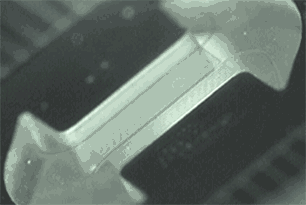Organ-on-a-chip
In an organ-on-a-chip a human organ is reproduced in its most elementary form: in a micro-fabricated device. These MEMS devices often comprise multiple cell types and are designed to reproduce relevant physical factors as they occur in the human body. organ-on-a-chip models will be crucial in the development of new generations of medicines and in the elimination of animal testing.
Physical factors reproduced by an organ-on-a-chip
Examples are of reproduced physical factors are:
- Stress
- Strain
- Temperature
- Share rate
The cells in an organ-on-a-chip are in direct contact with the micro-fabricated device. This poses special requirements on the materials that are used, since standards materials like silicon and other ceramic layers are hard and rigid and form a poor substrate for living matter. For this reason organ-on-a-chip devices heavily rely on the processing of polymer materials that are relatively new in a micro-fabrication environment, such as polyimide, SU8, parylene and PDMS.
In our MEMS and Thin Film facility there is a large experience in the processing of these polymer materials. Since these materials are so important in bio-medical devices in general, there is a continuous effort to bring the deposition and processing of polymers to the same quality level as may be expected from more familiar inorganic materials.
The expertise and process capabilities described above are available for custom-specific projects.
Check out our other MEMS applications
MEMS applications are many. Organ-on-a-chip for example, where a human organ is reproduced in its most elementary form: microelectromechanical systems device. Several applications stand out, because of their promise and our capabilities.
Sustainable competitive advantage through custom MEMS devices. Check out our services in the MEMS & Micro Devices key area of expertise.




